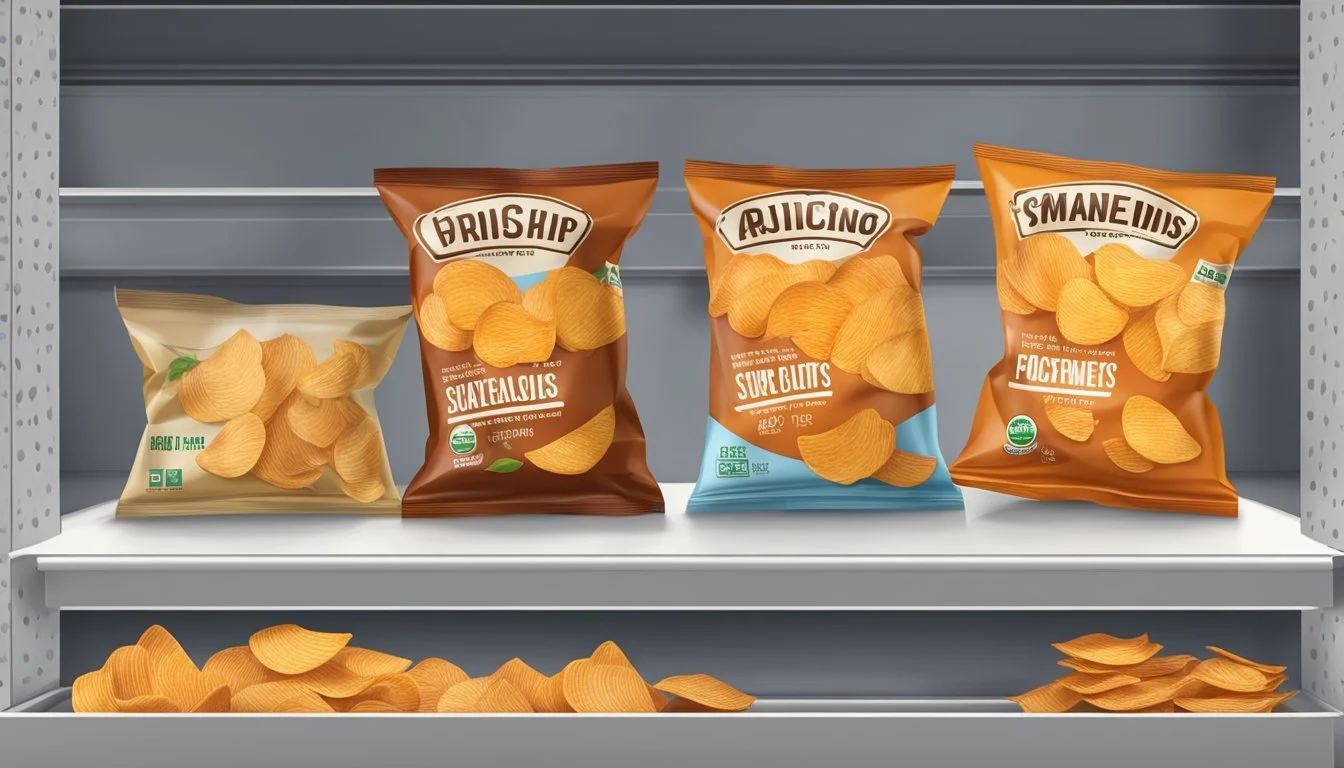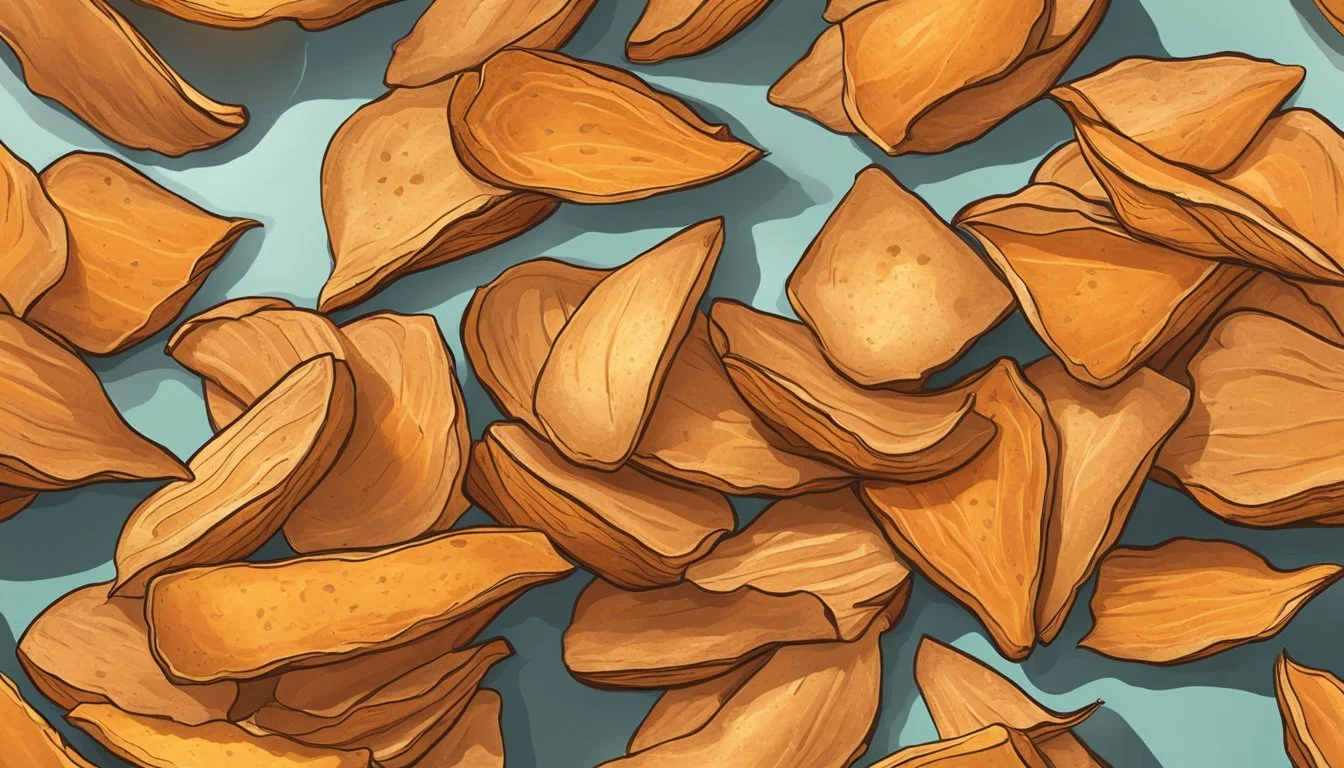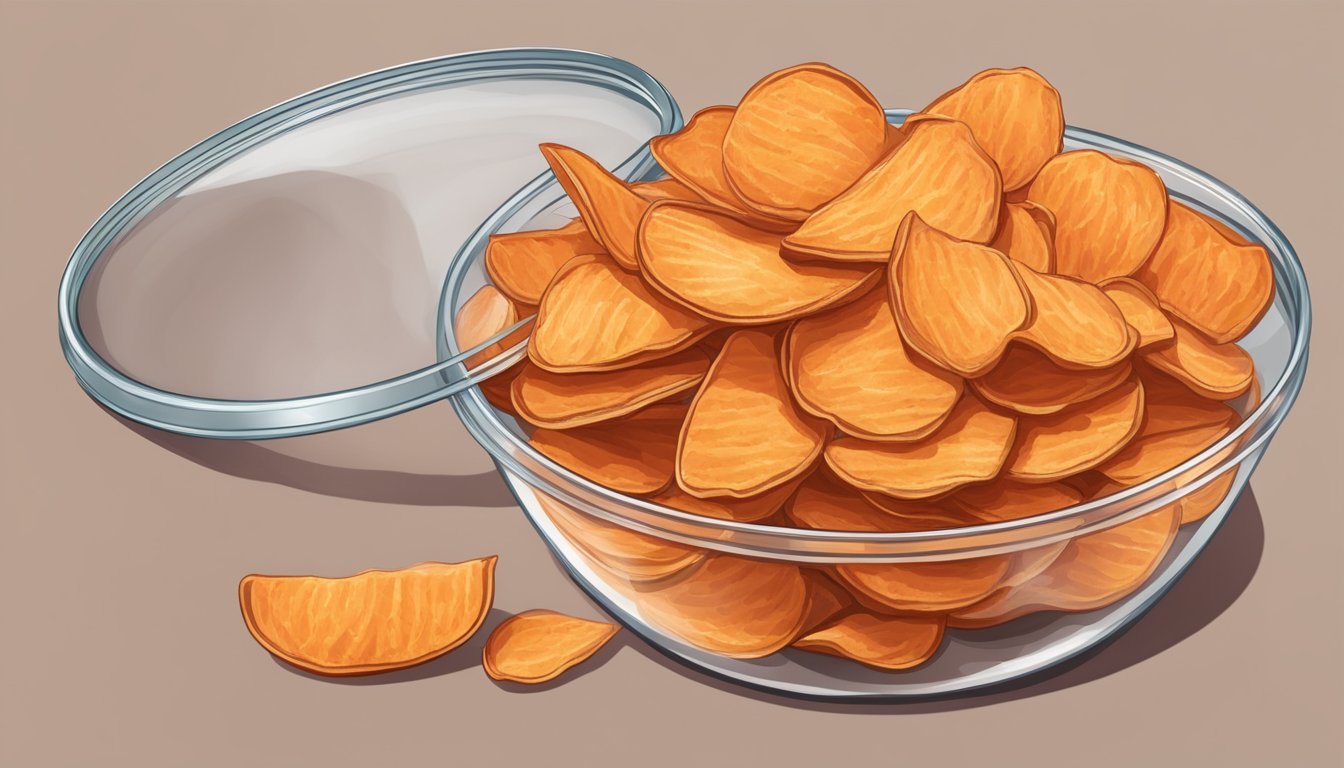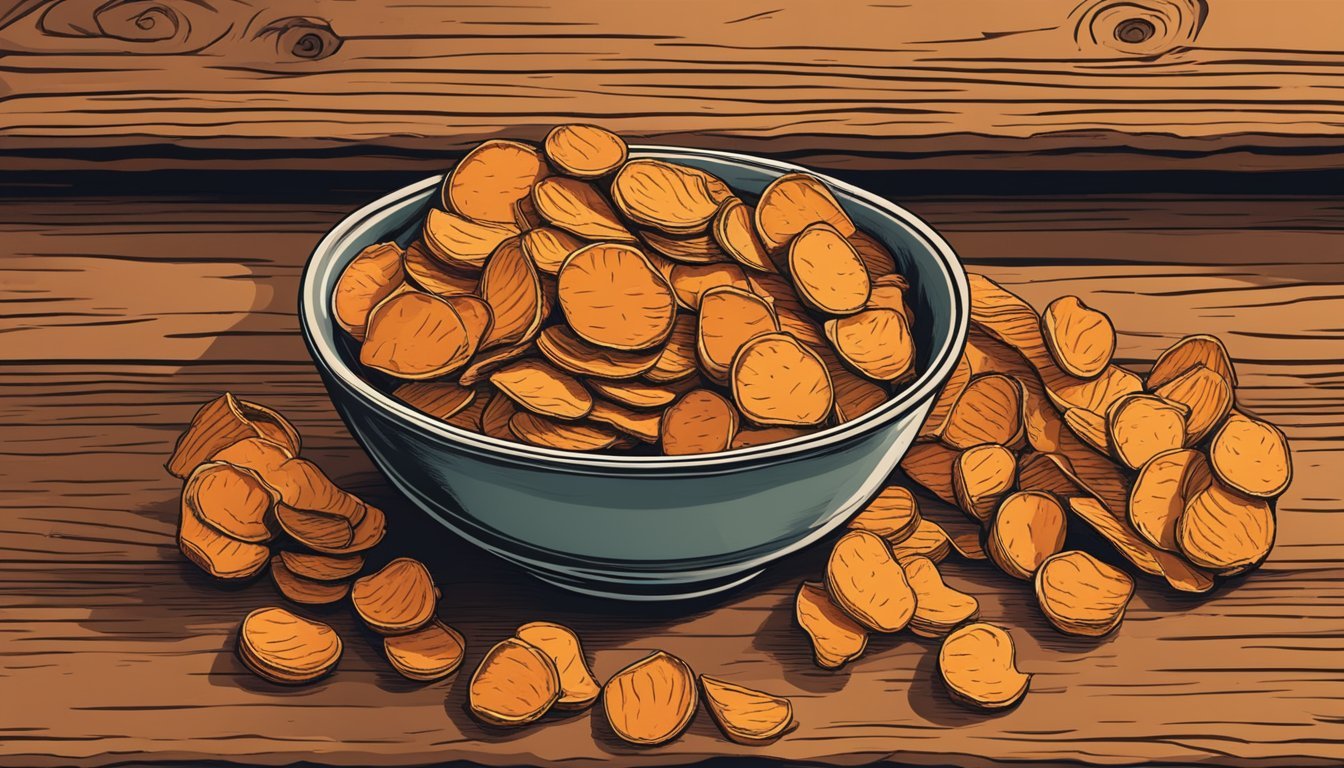Do Sweet Potato Chips Go Bad?
Shelf Life and Storage Tips
Are you curious about the shelf life of sweet potato chips and how to tell if they go bad? Sweet potato chips can indeed go bad, just like any other perishable food product. Their shelf life largely depends on how they are stored and packaged. When stored in a cool, dark place, unopened bags of sweet potato chips can last for several weeks or even months.
Proper storage is crucial to maintaining the freshness of sweet potato chips. Once opened, they should be kept in an airtight container to prevent moisture and air from spoiling them. Refrigeration or freezing can extend their shelf life, with frozen sweet potato chips lasting up to six months.
Identifying spoiled sweet potato chips involves checking for signs like mold, unusual odors, and a change in texture. Eating spoiled chips can lead to food poisoning, so it's important to discard any that show these signs.
Understanding Sweet Potatoes
Sweet potatoes are a nutrient-dense root vegetable known for their high fiber content and rich supply of vitamins and minerals. Properly understanding the varieties and the best practices for harvesting and curing can enhance their nutritional benefits and longevity.
Varieties and Nutritional Value
Sweet potatoes come in several varieties, including Beauregard, Jewel, and Japanese. These types differ primarily in skin color and flesh texture. Beauregard has orange flesh, while the Japanese variety has a white or pale yellow interior.
Nutritionally, sweet potatoes are packed with fiber, vitamin A, vitamin C, and potassium. They also offer a substantial amount of antioxidants, contributing to better overall health. A 100-gram serving provides roughly:
86 calories
2 grams of protein
4 grams of fiber
437% of the Daily Value for Vitamin A
These nutrients support various body functions, from immune health to skin integrity.
Proper Harvesting and Curing Processes
Effective harvesting involves digging up the sweet potatoes carefully to avoid bruising, typically when the soil is dry. It's essential to handle the roots gently since damages can lead to quicker spoilage. After harvesting, curing sweet potatoes is crucial. This process enhances their sweetness and extends shelf life.
Curing should occur in a warm (around 85°F) and humid (90% humidity) environment for approximately ten days. This setting allows the potatoes to heal minor cuts and convert starches to sugars. Once cured, store them in a cool, dark place to maintain their quality for months.
Proper harvesting and curing maximize both the nutritional benefits and the storage potential of sweet potatoes, making them a versatile addition to any diet.
Factors Affecting Sweet Potato Chips Shelf Life
Sweet potato chips can last for varying durations depending on several key factors. Proper storage and attention to signs of spoilage are crucial for maintaining their freshness.
Importance of Storage Conditions
Storage conditions significantly affect the shelf life of sweet potato chips. Moisture is a major concern, as it can lead to sogginess and mold growth. Storing the chips in airtight containers helps minimize exposure to humidity and preserves their crispness.
Temperature also plays a critical role. Refrigeration can keep homemade sweet potato chips fresh for 3 to 5 days. For longer storage, freezing is a viable option. Keeping chips away from direct light and heat sources prevents deterioration and rancidity due to oil oxidation.
Ethylene gas, produced by certain fruits, can accelerate spoilage. Therefore, it's best to store sweet potato chips away from products like apples and bananas. Optimal storage conditions involve a cool, dry, and dark environment to maximize the chips' shelf life.
Identifying Signs of Spoilage
Several indicators can reveal if sweet potato chips have gone bad. Visible mold growth or changes in texture, such as excessive softness or mushiness, are clear signs of spoilage.
A foul odor suggests bacterial contamination and renders the chips unsafe for consumption. Additionally, the appearance of oozing liquid is a sign that the moisture content within the chips has increased, leading to degradation.
Consistent checks for these signs are essential for ensuring the chips remain safe and enjoyable to eat. Recognizing and responding to these signs early can prevent consumption of spoiled chips, safeguarding health and taste.
Storing Sweet Potato Chips Correctly
Proper storage of sweet potato chips can extend their shelf life and maintain their crispness. Key methods include room temperature storage and freezing options, which vary in effectiveness based on how long you need to store the chips.
Room Temperature Storage
Sweet potato chips can be stored at room temperature for short-term needs. They should be kept in a cool, dry, and dark place such as a pantry. It is important to use airtight containers to prevent exposure to humidity, which can make the chips lose their crispness.
A pantry is usually a good option provided it doesn’t get too warm. Storing in airtight glass jars or plastic containers ensures that air and moisture stay out. Remember to label the containers with the preparation date to keep track of freshness. Chips stored this way can usually last for a couple of weeks.
Refrigeration and Freezing Options
For longer-term storage, refrigeration or freezing is necessary. While refrigeration is an option, it is typically less effective for maintaining crispness compared to freezing. Refrigerate in airtight containers to avoid moisture build-up.
Freezing provides the best results for long-term storage. Lay the chips in a single layer on a baking sheet and freeze until solid. Transfer them to freezer-safe bags or containers, removing as much air as possible. Label with the date and use within six months for optimal flavor and texture.
By following these methods, you can maximize the shelf life of your sweet potato chips while preserving their quality and taste.
Identifying Spoiled Sweet Potato Chips
Examining the visual and texture changes, as well as aroma and taste differences, can help determine if sweet potato chips have gone bad. These signs are crucial for ensuring that the chips are safe to consume.
Visual and Texture Changes
Spoiled sweet potato chips often exhibit noticeable changes in appearance and feel. Common signs include discoloration, such as dark spots or mold growth. Chips that were once a vibrant orange may turn dull or show patches of grey or black.
The texture of the chips also offers clues. Fresh sweet potato chips are crisp and firm. Spoiled chips, in contrast, may become soggy, limp, or excessively hard. If mold is present, it may appear as fuzzy, white, or greenish patches.
Aroma and Taste Differences
Odor is a reliable indicator of spoiled sweet potato chips. Fresh chips have a slightly sweet, earthy scent. Spoiled chips, on the other hand, might emit a sour, musty, or fermented smell. These unpleasant odors indicate bacterial or fungal growth.
Taste changes are equally important. Spoiled chips often taste off, bitter, or unusually salty. Such off-flavors arise from chemical changes in the potato during spoilage. If a chip tastes bitter or unpleasant, it is best to discard it immediately to avoid potential health risks.
Health Implications of Eating Spoiled Chips
Consuming spoiled sweet potato chips can lead to various health issues. Spoiled chips may harbor harmful bacteria, which can cause gastrointestinal problems.
Food poisoning is a major concern. It occurs when harmful bacteria or mold present in the chips are ingested.
Symptoms might include:
Nausea
Vomiting
Diarrhea
Even a small amount of spoiled chips could trigger these reactions.
Harmful bacteria in spoiled chips can irritate the stomach lining. This leads to digestive distress and can cause significant discomfort.
If symptoms worsen or persist, it is important to seek medical attention. Proper food handling and storage are key to avoiding these issues. Always inspect chips for signs of spoilage like a rancid smell before consumption.
Extending the Life of Sweet Potato Chips
Proper storage and advanced preservation methods are essential for keeping sweet potato chips fresh and tasty for as long as possible.
Culinary Techniques for Longevity
Sweet potato chips made at home can benefit from precise culinary techniques. Roasting or baking the chips rather than frying them can help reduce moisture content, which prolongs shelf life. Using an air fryer is another great option, as it ensures even cooking and lower oil absorption.
Once cooked, storing the chips in an airtight container is crucial. Keeping them in a cool, dry place will help maintain their crispiness for up to 5 days. To further limit exposure to moisture, placing a desiccant packet inside the container can absorb any residual humidity.
Advanced Preservation Methods
For longer-term storage, freezing the sweet potato chips is effective. Before freezing, ensure the chips are completely cooled to prevent ice crystals from forming. Place the chips in a single layer on a baking sheet and freeze until solid. Then, transfer them to a zip-lock bag or an airtight container, squeezing out as much air as possible to prevent freezer burn.
Another advanced method is curing the sweet potatoes before making chips. Curing involves storing the freshly cut potatoes in a warm, humid environment for several days to enhance their natural sugars and harden their skins. This process can significantly extend the storage life of the chips once they are prepared.
Alternatives to Sweet Potato Chips
Exploring alternatives to sweet potato chips opens up a variety of healthier and equally delicious snacking options. From healthy snacks to homemade chips with different cooking methods, there is something for every palate.
Healthy Snacking Options
A range of nutritious snacks can be found as replacements for sweet potato chips. Baked sweet potatoes are an excellent option, providing a naturally sweet flavor with a soft texture. They contain essential vitamins and can be seasoned with herbs for added taste.
For roasted vegetables, consider carrot sticks, beets, zucchini, or even sugar snap peas. These can be seasoned and cooked in the oven to provide a satisfying crunch. Seasoning options include a light sprinkle of olive oil, salt, and pepper.
Another option is sweet potato fries, which can be baked or cooked in an air fryer. This method reduces the use of oil, making them a healthier alternative.
Homemade Chips and Cooking Methods
Creating homemade chips allows for control over ingredients and cooking methods. Use an air fryer to achieve a crispy texture with minimal oil. This method works well for not only sweet potato chips but also chips made from other vegetables like kale and carrot.
Baking is another popular method. Slice vegetables thinly, season with a little olive oil, salt, and pepper, and bake until crisp. This method is perfect for making unique and nutrient-dense snacks like beet chips or parsnip chips.
Lastly, consider using roasting as a technique. This involves higher temperatures, which can help in caramelizing the natural sugars in vegetables, adding a depth of flavor.
By exploring these options, healthier and diverse snack choices are readily available.







